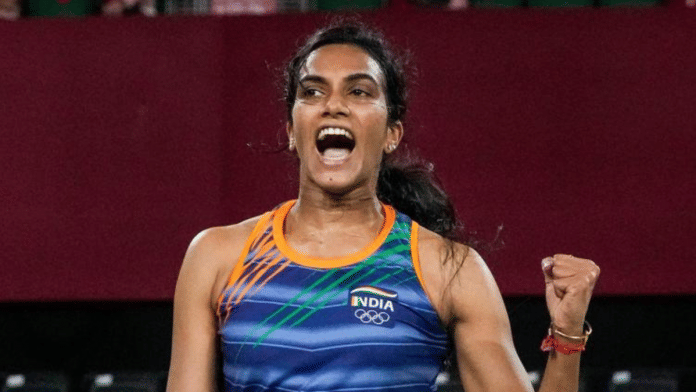If you want to understand the power of body language, watch the New Zealand All Blacks perform the customary Haka before their rugby matches. The entire team gathers to participate in a traditional Māori war dance. Imagine the entire team, dressed in all black—knees bent, leaning forward, tongues sticking out, fiery eyes staring at their opponents, thumping their chests, and chanting in unison. It’s a sight to behold.
You don’t need to understand the words to feel the goosebumps.
Besides honouring their cultural roots, the Haka is a ritual that brings the team together and energizes them. It’s a show of brute force, strength, and unity. Imagine the impact on the opponents!
Body ‘Language’
Think of an image of a confident person. You’ll probably imagine someone standing tall and steady, back straight, shoulders relaxed. They’re looking straight ahead, making eye contact—perhaps even smiling. Now think of someone who’s nervous or underconfident. You’ll likely picture a person making themselves smaller, crouched slightly—back hunched, shoulders rolled inward, looking down or away. You may also notice jitteriness in their hands and legs. Without saying a word, so much is being communicated!
It’s called a language because that’s exactly what it is. Our body is one of the most important tools of communication. In this way, it’s not possible not to communicate. If we’re in the presence of another, we are always communicating something. The idea, then, is to make sure this communication is effective—and aligned with the results we want.
Staring down an opponent can be intimidating. Appearing relaxed and unfazed—sometimes even smiling at someone else’s aggression—is another form of power. A look of frustration or helplessness, on the other hand, can boost your opponent’s confidence and reduce trust among key stakeholders.
Also read: When India last toured England, Rohit Sharma was top scorer—‘no more an accidental Test opener’
First Impressions
Did you know that it sometimes takes less than a tenth of a second for someone to form a first impression about you? Other cognitive biases then swoop in and ensure that these first impressions stick. And no matter how accurate or faulty—or the subsequent information learnt about the individual—this impression can have a significant impact on several aspects of life, including our career and relationships. Body language is perhaps one of the most important elements that impacts these first impressions, and that, amongst many other reasons, is what makes them so powerful.
The Language of Confidence
Here are some essentials when it comes to portraying confidence in your body language. Keep your back straight, take a deep breath, and allow your chest to expand and fill up with confidence. Relax your shoulders and your facial muscles. Keep an open stance, that is, don’t cross your arms—it’ll portray being closed off or disinterested. Stand firm and tall, distributing your weight equally to both your legs. Practise a firm handshake. Avoid fidgeting or shifting your gaze; maintain eye contact with whoever you meet and, most importantly, don’t forget to smile!
Also read: Saina Nehwal fell out with coach Gopi when her Olympic win got him students like PV Sindhu
Suit Up!
It’s not just our actions and postures that impact perceptions; it’s also how we groom ourselves and the clothes we wear. It may be hard to believe, but several studies have found that players and teams that wear the colour red—a colour associated with aggression and dominance—actually win more. It’s also why people choose to wear a red tie at certain occasions that demand a show of strength and authority. While the colour of a jersey or tie alone can never be the determining factor for success, it certainly does leave an impression. So next time you’re going in for an interview, an important presentation, or just any situation where you want to create an impact, take a moment to think about how the clothes you wear make you feel about yourself, and how you want to present yourself to others.
The Mind–Body Feedback Loop
Body language isn’t just about communicating with others, you can also think of it as another kind of self-talk. Simply put, while we’re all aware that our mood impacts our body language, our body language can also impact our mood!
A study conducted in 1988 found that participants who read a cartoon or article while holding a pencil horizontally between their teeth actually found the article funnier. This was because such a task ‘forced’ the person’s face into the shape of a smile, thus sending a message to the brain that the person was happy. (Go ahead and try it yourself! See if putting a finger horizontally in between your teeth brings about any changes in your mood!)
You’ll also notice this feedback loop in your everyday life. If you’re tense, it’s likely that your shoulders are raised close to your ears, or your face is frozen in a frown. Just making a conscious effort to relax your shoulders and eyebrows at this time can change the way you feel. It’s a similar thing with confidence. If you’re feeling underconfident and find yourself slouching, just take a deep breath and straighten your back. A simple action like this will actually trick your mind into feeling more confident.
Also read: A football stadium rose to cheer this Mumbai police officer in 1977
Train Your Body Language
In an interview with P.V. Sindhu and her coach Pullela Gopichand, after her 2016 Rio Olympics medal, the duo spoke about how Gopichand had encouraged Sindhu to scream during her matches. It’s not something that came naturally to her at all! In fact, they spoke of a time when Sindhu had to stand in the centre and everyone else at the academy was asked to stop playing until she could muster the courage to shout. It was an important skill for her to learn, for her to portray this raw force out there on the court.
Just like every other element of performance, don’t expect the right body language to just come to you automatically. It’s something we need to make part of our performance routine, something we need to train. When practising, be aware of your body language and what you’re communicating. Practising your body language in front of a mirror, or getting feedback on it from a trusted other, can help. When you visualize your performance, keep an eye on the kind of body language you’re displaying.
If you’ve been doing it for years, your body may keep returning to its default patterns of slouching or becoming smaller in other ways. Become aware of this tendency and work towards intentionally changing it in your everyday interactions. Before stepping out there, remind yourself to take up a confident posture. Make it a part of your pre-performance routine. After every break, as you resume your work, take a moment to adopt a confident, relaxed stance.
 This excerpt from Dr Samir Parikh and Divya Jain’s ‘The Champion Within: Life Lessons from Sport Psychology’ has been published with permission from Rupa Publications India.
This excerpt from Dr Samir Parikh and Divya Jain’s ‘The Champion Within: Life Lessons from Sport Psychology’ has been published with permission from Rupa Publications India.







I like those who become champions without screaming. The joke is on those who scream and lose.